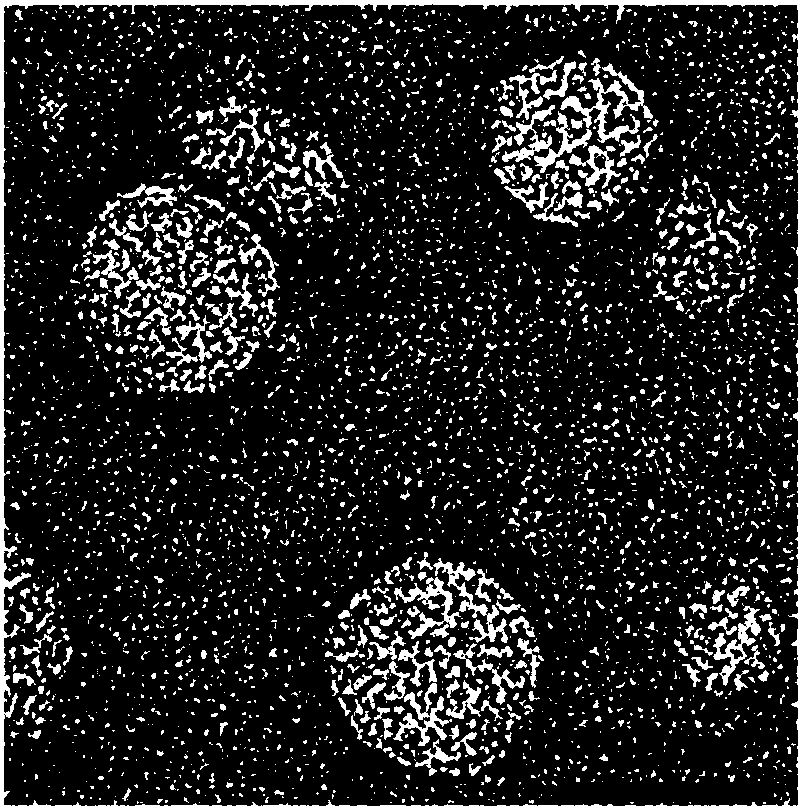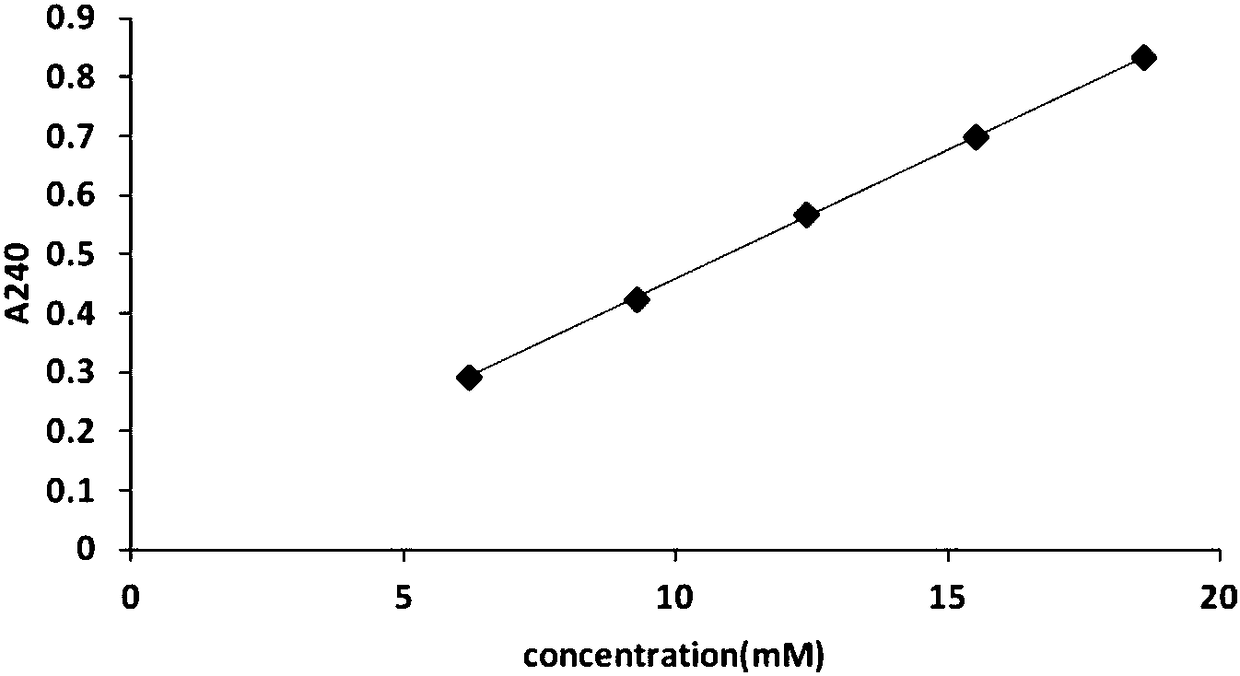Nano preparation for improving stability of enzyme drugs and preparation method and application of nano preparation
A nano-formulation and stability technology, applied in the field of biopharmaceuticals, can solve the problems of uncontrollable sources of poly-lysine and application limitations.
- Summary
- Abstract
- Description
- Claims
- Application Information
AI Technical Summary
Problems solved by technology
Method used
Image
Examples
Embodiment 1
[0035] Synthetic PEG-DGL
[0036] The amino group on the surface of DGL reacts specifically with the NHS at one end of the functional PEG. According to the ratio of DGL:PEG=1:6 (mol / mol), NHS-PEG was dissolved in PBS 7.4 buffer solution, and then added dropwise to the stirred DGL solution (5mg / ml, PBS, pH=7.4) , and the reaction was stirred at room temperature for 1 h. Transfer to a 5kDa ultrafiltration tube, add PBS, centrifuge at 6000rpm for 20min, repeat twice, and purify to obtain PEG-DGL;
[0037] Preparation of PEG-DGL-PDP
[0038] The amino groups on the surface of DGL react specifically with the NHS on the surface of the crosslinker N-succinimidyl 3-(2-pyridyldithio)-propionate, SPDP. SPDP and PEG-DGL (DGL:SPDP=1:2mol / mol) were mixed in PBS solution (100mM Na 3 PO 4 , 1mM EDTA, pH=7.4), and the reaction was stirred at room temperature for 1-3h. Part of the amino groups on the surface of DGL are replaced by PDP groups to obtain PEG-DGL-PDP;
[0039] Preparation o...
Embodiment 2
[0053] Example 2 In vitro stability study of CAT in nanoparticles
[0054] The freshly prepared PEG-DGL / CAT-Aco nanoparticles (0.5 mg / ml CAT) were added with trypsin (10 -5 M) Mixed and incubated at 37°C for 3 hours. Using CAT-Aco as a control, the PEG-DGL / CAT-Aco nanoparticles (mass ratio of 1.25, 2.50, 5.00, 7.50, 10.00) were degraded by trypsin according to the above method. The residual CAT activity was used to investigate the stability of nanoparticles;
[0055] like Figure 4 As shown, when the mass ratio of nanoparticles (DGL:CAT) was in the range of 1.25-10.00, embedding CAT-Aco in PEG-DGL significantly increased the stability of the enzyme, and with the increase in the mass ratio of DGL to CAT, the PEG-DGL The stability of / CAT-Aco nanoparticles gradually increased, and when it reached a certain level, the stability of nanoparticles remained within a certain range, indicating that nanoparticles can reduce the degradation of CAT by trypsin, and the PEG-DGL / There wa...
Embodiment 3
[0056] Example 3 Investigation experiment of intracellular stability of CAT in nanoparticles
[0057] HL-60 cells were mixed with catalase and different types of nanoparticles in serum-free medium, and incubated at 37°C for 1 h. The cell suspension was collected and centrifuged at 2000 rpm for 5 min. Add HBSS to resuspend, centrifuge at 2000 rpm for 5 min, repeat twice, add fresh culture medium, and culture in a 30°C incubator. At different time points, collect cells and culture medium, and use catalase detection kit to measure the intracellular catalase activity and the enzyme activity released from HL-60 cells according to the instructions;
[0058]For the determination of intracellular catalase activity at different time points, a certain amount of cell lysate (containing 1% protease inhibitor) needs to be added to the collected cells, and after incubation on ice for 15 minutes, the cells are crushed with an ultrasonic pulverizer (power 100w , ultrasonication for 3 s), ce...
PUM
| Property | Measurement | Unit |
|---|---|---|
| The average particle size | aaaaa | aaaaa |
Abstract
Description
Claims
Application Information
 Login to View More
Login to View More - R&D
- Intellectual Property
- Life Sciences
- Materials
- Tech Scout
- Unparalleled Data Quality
- Higher Quality Content
- 60% Fewer Hallucinations
Browse by: Latest US Patents, China's latest patents, Technical Efficacy Thesaurus, Application Domain, Technology Topic, Popular Technical Reports.
© 2025 PatSnap. All rights reserved.Legal|Privacy policy|Modern Slavery Act Transparency Statement|Sitemap|About US| Contact US: help@patsnap.com



